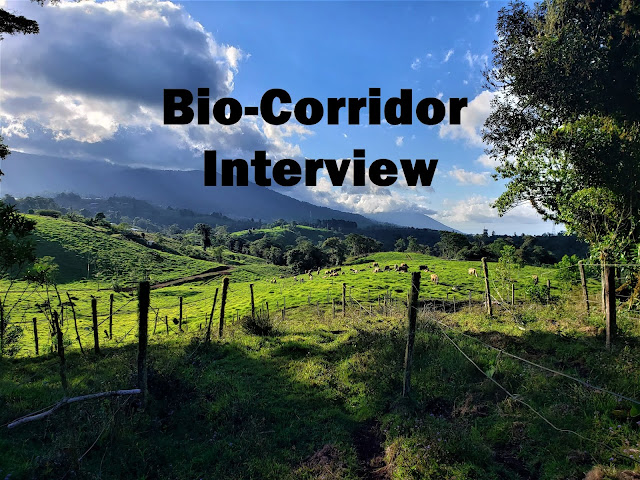Bio-Corridor Interview
In an effort to introduce ourselves to the community and to collect information, we visited local farmers and asked what they thought about bio-corridors. Here’s a sample from our conversations:
Sebastián de la Ossa (ADE Creation Care Director): A biocorridor is a system of land that connects various fragments of habitat. Once repaired, the ecosystem can bring many environmental goods and services to a community. If we can take advantage of them without doing any harm, the ecosystem becomes a valuable and productive asset of the local economy. Any initial thoughts on this?
Alonso (strawberry farmer in Vara Blanca): I’ve never heard of a bio-corridor before, but that sounds really important. What exactly do you mean by environmental goods and services?
Sebastián: A bio-corridor connects fragments of habitat, but it also connects people with the environment and with each other. The most important part of building a bio-corridor is convening the community. In doing so, people connect with other community members and are able to more efficiently buy and sell resources. They might even create new businesses, like hosting tourists that come to see animals that we hope will return to the area.
Alonso: That sounds great. We don’t get too much tourism out here, but I would love to show visitors around my farm and as an example of sustainable agriculture.
Sebastián: What kinds of wildlife have you seen in the past three months? Do you see any on your farm?
Alonso: I’ve seen deer, coyotes, tapirs, wild hogs, and wild turkeys on my farm. I’ve also seen goldfinches (jilgueros), but mostly at the forest’s edge. And I’ve heard quetzals, but I haven’t seen any. I haven’t seen any wild cats around these parts.
Sebastián: Do you typically see more or less wildlife today than you saw ten years ago?
Alonso: Today there’s much less wildlife than I used to see. It’s a shame. How long do you think it will be before the wildlife comes back?
Sebastián: It’s a long process. The biocorridor will most likely be built bit by bit, so we’re not exactly sure how long it will be until the Poás and Barva volcanoes are linked. It could take anywhere from a few months to a few years. But the more reforestation we do and the faster we do it, the faster the wildlife will be able to return.





Comments
Post a Comment